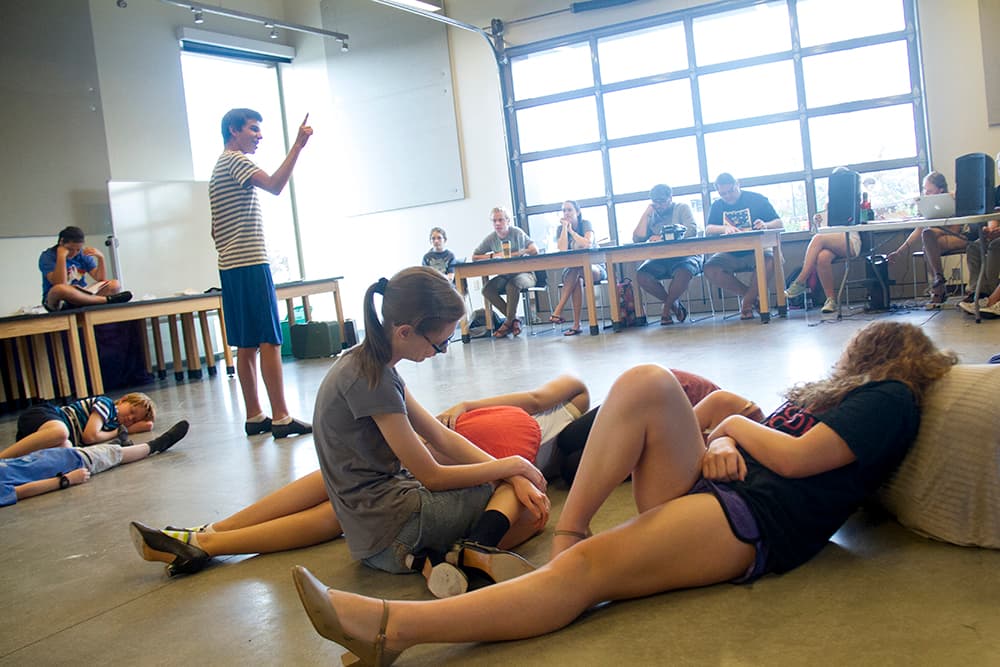
The Colorado Symphony gets about a $1 million a year from the 0.1 percent sales tax that the Science and Cultural Facilities District collects from seven counties in the Denver metro area. That's the same amount the symphony got in the 1990s.
The Colorado Symphony is one of 28 Tier II organizations that share $11.5 million in SCFD tax revenue, but back when the SCFD was created, there were just six Tier II organizations.
"That's our biggest issue -- the dilution," said Jerome Kern, CEO and co-chair of the symphony board.
Issue 4B on ballots in seven counties will extend the 0.1 percent sales tax until 2030 and, starting in 2018, change the way that tax is distributed among Tier I, II and III organizations, with a little more money going to the smaller organizations and a little less going to the top five in Tier I. There was a hard-fought battle over that funding distribution before arts organizations ultimately settled for the relatively modest change in the funding structure that appears on the ballot.
If Issue 4B passes, that distribution structure will be locked into place until 2030, but it won't fully put to rest questions of how the money is dispersed.
The Tier I organizations -- the Denver Art Museum, Denver Botanic Gardens, Denver Museum of Nature and Science, the Denver Zoo, and The Denver Center for the Performing Arts -- have large buildings and collections to maintain, and they serve the entire metro region. That's been the basis of their claim to the lion's share of SCFD money.

But mid-sized organizations have needs too.
"You always hear from the zoo, 'We have to feed the animals,'" Kern said. "I have 80 musician-animals and 35 staff-animals. They need to eat too."
After the election, Kern wants the board that administers the SCFD to take another look at how it determines Tier II eligibility. There's a formula based on earned income and attendance, and over time, more organizations have met that criteria.
SCFD representatives said it's a bit premature to talk about changing Tier II criteria.
"We need to let the new revisions in the funding settle in a bit before we look at that," said Michele Ames, a spokeswoman for Yes on 4B.

Of course, making it harder to get into Tier II means more organizations in Tier III jockeying for their share.
SCFD money has been a godsend to small organizations like Downtown Aurora Visual Arts. The organization provides free on-site arts education for around 1,000 children a year in everything from painting and drawing to graphic design and film.
Downtown Aurora Visual Arts has to apply for funding from SFCD at the county level each year, and the application is detailed and exacting. But it's been a steady source of funding as other entities that used to fund arts education for youth -- like the Colorado Department of Behavioral Health -- have put their money elsewhere.
"They have been an anchor," Executive Director Susan Jenson said. "It's been really consistent funding, and it's been clear they choose to fund arts education along with myriad other needs."
At the same time, SCFD funding has declined from about 35 percent of their annual budget to around 22 percent.
Any expansion of Tier III funding is a step in the right direction. Tier I has more ability to raise money from donors and corporate sponsors, Jenson said.
"If I had one-tenth of the development capacity that the larger institutions had, I would be very happy, "Jenson said. "Everybody's budget needs every penny. I see Tier III scrambling to make ends meet."
And if more organizations slipped from Tier II to Tier III?
"The reality is that arts funding is a pie," she said. "The more people who get a slice, the smaller the slice is."
Projections from the Science and Cultural Facilities District estimate that the tax will bring in $88 million annually by 2030, with $86 million going out to arts organizations. That's compared to $54 million dispersed in 2016. The increase would come from the growth in population and the size of the Denver metro economy, not any change in the tax rate.
The new formula for distribution goes into effect in 2018, and as the revenue collected by the tax grows, more of it is subject to the new distribution formula. The changes mean five Tier I organizations will have between $3 and $4 million less each year to divide among themselves compared to keeping the distribution schedule the same, and Tier II and Tier III organizations will share an additional $1 to $2 million each year in each tier.
The projected annual growth rate is 3.6 percent, but as that compounds over time, Tier I organizations will get more in 2030 than the entire facilities district collects today.
Meanwhile, the Colorado Symphony isn't waiting on SCFD changes. In the last few years, the symphony has worked to build an endowment that can carry it into the future and tried innovative new programming to bring in new audiences.
Kern said the bigger long-term issue is the lack of serious education about arts and music that would help younger people appreciate what Denver's institutions offer.
"That is a recipe for all the cultural institutions to go down the tube because we don't educate our children in the arts anymore," he said.
Jenson said too many people see arts education as optional or only for the most talented rising stars, as opposed to vital education that builds skills like attention to detail and ability to plan, leadership and self-expression.
"That's the bottom line," she said. "How much do you want to invest in the cultural identity of a city?"












